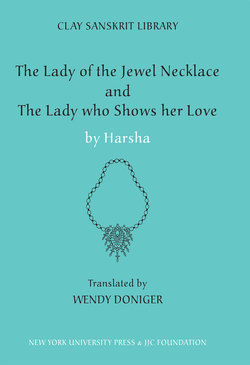Читать книгу The Lady of the Jewel Necklace & The Lady who Shows her Love - Harsha - Страница 13
На сайте Литреса книга снята с продажи.
Оглавление(including Nepal and Assam), from the Himalayas to the Narmada river, besides Malwa, Gujarat, and Saurashtra (the modern Kathiawar). He shifted the center of power from Ujjain in the west to Kanauj farther east. He was said to be able to field 60,000 war elephants and 100,000 cavalry. But when, in 620, he tried to cross the Narmada and extend his territory southward into the Deccan, he was stopped by king Pula·keshin II, the Chalukyan ruler of a Deccan kingdom. After his initial conquests, there was peace in his empire.
In light of the court intrigues in the two plays attributed to him, the details of Harsha’s political connections are highly suggestive. Harsha was descended through his grand- mother from the second Gupta line, and through his father from the Pushya·bhutis. His sister, Rajyashri, was married to the Maukhari king at Kanauj. According to Bana, after her husband was killed in battle, Rajyashri was taken hostage. She escaped and fled to the Vindhyas where she was about to throw herself on her husband’s funeral pyre, but Harsha snatched her from the pyre. She then hoped to become a Buddhist nun, but Harsha dissuaded her, as through her he could control the Maukhari kingdom. According to a second tradition, Harsha succeeded to both the Pushya·bhuti and Maukhari thrones, after his elder brother, Rajya·vardhana, the crown prince, and his sister’s husband (the Maukhari king) were killed in battle with the Guptas (Robb 2002: 42). A third tradition holds that Rajya·vardhana was treacherously murdered by the king of Bengal, whom he had sought as an ally in an expedition against the Raja of Malwa (Kale 1921: xxi; Smith 1914: 335–9), and _____
